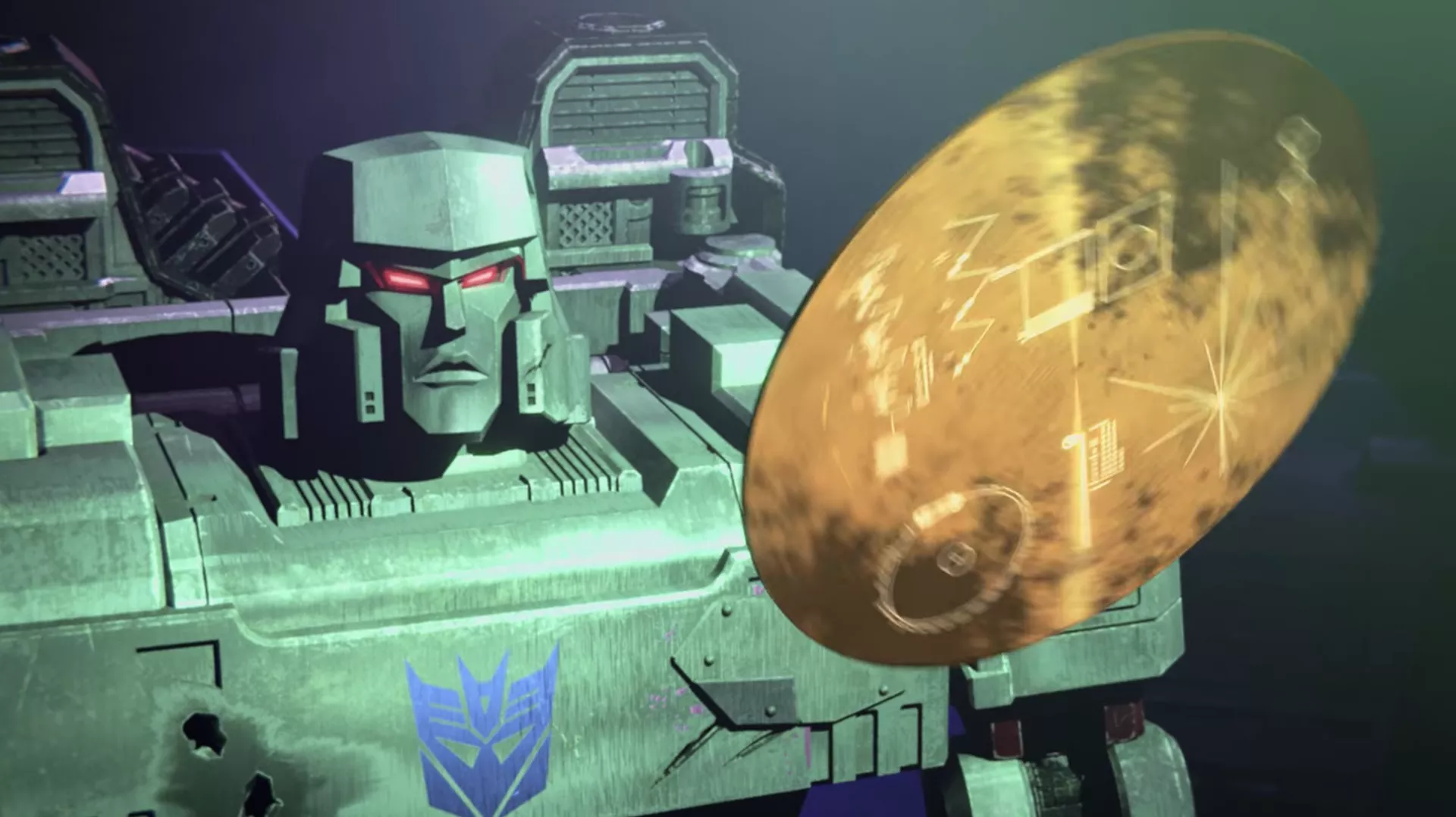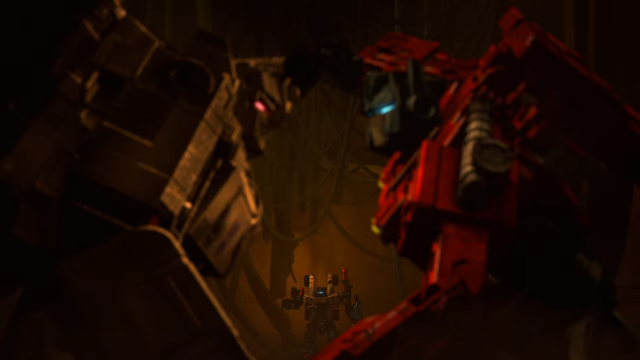Transformers is a franchise that from the get-go has almost been ceaselessly fascinated with its past. The long shadow of the fabled “G1” era — from its design sensibilities to its origin deep-dives — has cast a long shadow over so much of what has come since, including Netflix’s latest re-litigation of the War for Cybertron. But its newest chapter lays the foundation for revisiting a bold moment from Transformers history in a new way.

Much like Siege before it, the mouthful Transformers: War for Cybertron — Earthrise (the second of three planned miniseries from animation studio Rooster Teeth retelling the origins of the Transformers saga) suffers from a sluggish pace, even with its otherwise relatively strained six-episode runtime. Cybertron is behind the bulk of Optimus Prime’s remaining Autobot forces who left their homeworld at the climax of Siege, and Megatron’s Decepticons are hot in pursuit. Besides that? Not much really happens.
Earthrise begins to dive deep into the wider lore of Transformers history, before Optimus and Megatron were playing interstellar rock ‘em sock ‘em robots with each other, while also tightening its focus on those two leaders, their ideals and goals, and how they are contrasted against each other. But that means it’s a lot of talking, and not a lot of doing, as groundwork is laid for them both to not just come into their own resolve as the leaders of their respective factions, but for them to eventually, well, rock ‘em and sock ‘em at each other again.

It’s only really in the back half of Earthrise that some of its most interesting material comes to the fore, as Optimus and Megatron find themselves being presented potential futures that are, to longtime Transformers fans, windows into actual history. Within the Dead Universe — the alternate dimension where some of Transformers’ most sinister villains were exiled — Optimus is given a future vision that’s pretty much a trailer for Transformers: The Movie.
Through the exiled Sky Lynx, Optimus is offered a look into a dark future if the struggling Autobot continues to doubt himself and his place as their leader, right down to his death and even a vision of the sinister Nemesis Prime, his dark-coloured villainous clone. Meanwhile, Megatron is aided by a time-travelling Galvatron (who is Megatron, given a new body after making a deal with Transformer God-Planet Unicron in The Movie), who has come to the past in order to reshape his eventual fealty to Unicron in an attempt to destroy the Autobots once and for all.
All of that’s very cool, if only because one of the things Transformers is typically good at is re-litigating Transformers: The Movie. It’s just appreciated that instead of simply re-doing The Movie, Earthrise tackles it as a concept that matters to this earlier timeline but isn’t retconned by it — engaging with the past material to fuel these current, differently nuanced takes on these beloved characters. But it’s The Movie fanservice that makes the actual final twist of Earthrise so compelling in a way little of War for Cybertron has really actually explored so far.
After both the Autobots and the Decepticons escape the Dead Universe in Earthrise’s climax and the newly emboldened Optimus and Megatron do battle over the Matrix of Leadership, their respective ships begin breaking up over the atmosphere of a planet below them. That planet is revealed to be prehistoric Earth, and what appears to be a humble velociraptor watches the debris make planetfall. Except, it isn’t a velociraptor: it’s a Dinobot. Hell, it’s the Dinobot, the villain-turned-hero transformer from the 1996 classic series, Transformers: Beast Wars.

Beast Wars was a massive tonal shift from what had come before it in Transformers continuity, set far, far beyond the events of the G1 cartoon. A split from the Japanese side of the Transformers franchise, Beast Wars focused on two warring robot factions, the Maximals and the Predacons — long-formed descendants of the Autobots and Decepticons, taking on their ideals (and in Predacon Megatron’s case, their names) as generation-spanning mantles, fighting a conflict that had been passed down across lineages. Now its CG animation might look a bit too retro and clunky for its own good, but at the time it was a bold departure from its contemporaries. Additionally, while it was originally controversial, its surprisingly nuanced expansion of Transformers continuity has earned it legions of fans.
There were already hints that Kingdom, the third and final chapter of War for Cybertron, would be tackling Beast Wars themes. After all, it’s literally in the name of the toyline these shows are inspired by, Kingdom, that’s currently rolling out. That includes the likes of Blackarachnia, Optimus Primal, and the Predacon Megatron, Beast Wars icons made to celebrate the series’ 25th anniversary. The show itself lays the groundwork earlier too, with Galvatron showing Megatron an image of the Voyager I record that was a major artefact in the original Beast Wars before he’s wrested back into his own time.

What’s most fascinating is thrusting these current War for Cybertron versions of Optimus Prime and Megatron, and their fellow Autobots and Decepticons, into the “contemporary” of Beast Wars. Just as Galvatron and Sky Lynx’s roles in Earthrise leveraged their nostalgic “futures” to shape these younger, still developing versions of these iconic characters, now they, in turn, get to shape the world and characters of Beast Wars’ directly, co-existing instead of being long-gone parts of their pasts.
What does it mean that the direct inspirations for the Maximals and Predacons will, presumably, be right alongside them in Kingdom? What does that change about these factions, and characters like Megatron’s descendant or Primal, and what does it mean for Optimus and Megatron as they continue to wrestle with who they both want to be for their respective comrades?
This isn’t just changing up what diehard Transformers fans have known about the past continuities for the sake of it, it’s a chance to leverage that past to shine new and interesting lights on the series’ most beloved characters — befitting the legacy of Beast Wars itself, 25 years after the fact.
